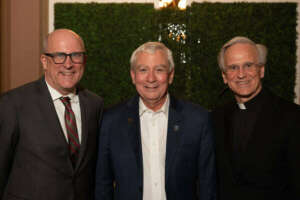
Over 16 years as vice president for research, Robert Bernhard has guided Notre Dame’s research programs through historic growth. The key, he says, has been building research infrastructure so that faculty and students can do what they do best while staying true to the University’s mission.
When Robert J. “Bob” Bernhard accepted the newly-created position of vice president for research at the University of Notre Dame in 2007, it was a moment four decades in the making for him. He had said “No” (reluctantly) to Notre Dame three times before.
The first “No” was for undergraduate admission.
Having grown up in a small Catholic community in northern Iowa, Bernhard was a fan of Notre Dame football. (He recalls drawing his father’s ire when he was late to take his turn on the tractor on his family farm because he was watching the end of the famous Notre Dame-Michigan State “Game of the Century” in 1966.) But it was only after the persistent urgings of his American Government teacher, a nun named Sister Eugene, a double Domer, that he began considering Notre Dame as an academic destination. Sister Eugene would occasionally tap Bernhard on the head with a pencil during class and ask, “Robert, have you applied to Notre Dame yet?”
Bernhard did apply. And eventually he received his acceptance letter in the mail. But the cost of attendance at Notre Dame ($5,000 a year at the time) sounded too steep to his father, who encouraged him to accept an offer (and in-state tuition) instead at Iowa State University.
The second “No” was for a teaching job.
Bernhard had flourished at Iowa State, earning his Bachelor’s degree in mechanical engineering in 1973. He had then worked as an engineer at Westinghouse Electric Company in Baltimore, where he also earned a Master’s in mechanical engineering at the University of Maryland before returning to Iowa State to pursue a PhD. By 1982, he had his diploma in hand and several interview invitations to consider.
One was at Notre Dame. But his plans to visit campus were postponed due to an early January blizzard. Plans to reschedule also fell through, and Bernhard ultimately said “Yes” to an offer from Purdue University.
The third “No” was for a deanship.
At Purdue, Bernhard’s research and teaching portfolios grew. He was eventually asked to direct Purdue’s Herrick Laboratories. Later, he accepted a position as Purdue’s Associate Vice President for Research. Just after starting the new job, Bernhard received a call from Frank Incropera. Incropera had been Bernhard’s colleague and mentor at Purdue before becoming dean of the College of Engineering at Notre Dame. He planned to step down as dean and wanted to recommend Bernhard as his replacement. But having recently accepted his new position, Bernhard said he had made too many promises to consider a new offer, and he declined.
The fourth time, one might say, was the charm—though, in reality, luck had little to do with it. When Bernhard was asked in 2007 to become Notre Dame’s first vice president for research, he considered what was important for what he expected to be his “last job.”
Catching a Vision
The new position was one of the first major research initiatives of University President Rev. John I. Jenkins, C.S.C. Jenkins had begun his presidency in the fall of 2005 by announcing a vision for building “a Notre Dame that is bigger and better than ever” in his inaugural address. He situated this new chapter in Notre Dame’s history by reminding his audience of a moment in the University’s past.
He spoke of the statement by Notre Dame’s founder and first President, Rev. Edward Sorin, C.S.C., in 1879 after a fire swept through the University’s main building, reducing it to rubble. “I came here as a young man and dreamed of building a great university in honor of Our Lady,” Sorin said, “But I built it too small, and she had to burn it to the ground to make the point. So, tomorrow, as soon as the bricks cool, we will rebuild it, bigger and better than ever.”
“Later that same day,” Jenkins explained, “the students saw Father Sorin, then 65 years old, stepping slowly through the ruins of his life’s work, bent slightly forward, pushing a wheelbarrow full of bricks, getting ready to rebuild.”
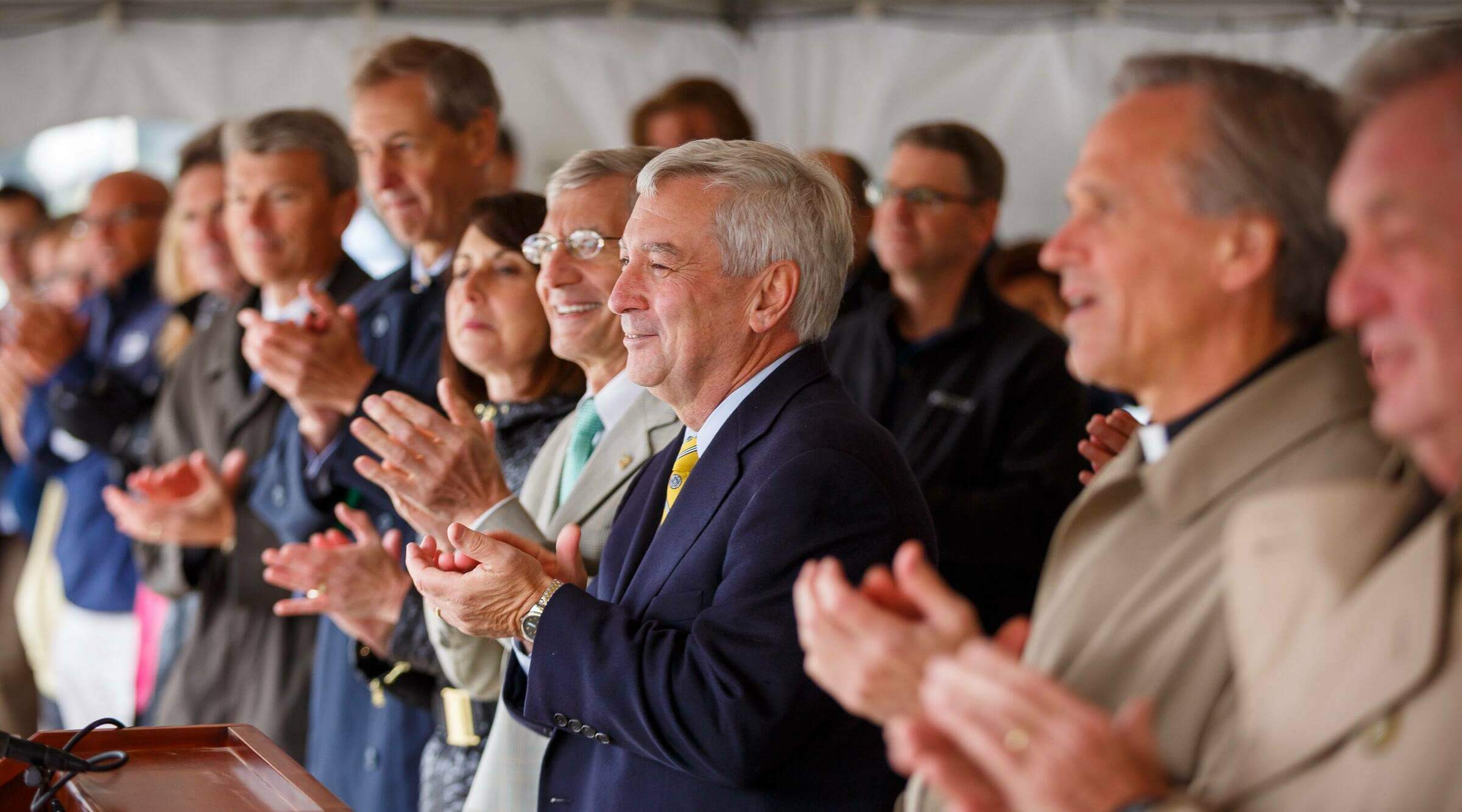
The “bigger and better” Notre Dame Jenkins was dreaming of would not be built of bricks alone. While remaining true to its commitment to unsurpassed undergraduate education, the University would now elevate its research to a new level of prominence—not only to advance the state of scholarship but also to make discoveries that improve lives around the world, to be “a healing, unifying, enlightening force for a world deeply in need.”
For Jenkins, this new Notre Dame was “a great Catholic university for the 21st century,” and that meant also being “one of the preeminent research institutions in the world.”
Jenkins knew that achieving this lofty goal would be a big job. He needed someone to lead the effort—someone who could not only help generate more resources for research and grow Notre Dame’s research infrastructure dramatically but also someone who could help build a more cohesive research culture at Notre Dame.
The broad set of experiences Bernhard had gained on his winding path to Notre Dame taught him a lot, including about vision and culture, especially the way that shared vision and values lead groups to succeed. So he recognized the shift that Jenkins was making in Notre Dame’s research culture. Jenkins was convinced that Notre Dame could be better at what it was already known for—excellent teaching and service—and that research could not only exist alongside these strengths but enhance them.
It was a vision Bernhard shared. And so, he found, did many of the faculty. He recalls that when he arrived, many faculty members were inspired by Jenkins’s vision. “I kept hearing the phrase echoed back to me—I’m here because I want to be a force for good.’ Faculty kept saying that over and over again,” Bernhard says.
Yet, as Bernhard listened to faculty discuss the University’s aspirations, he also sensed a note of hesitation. It was less a question of what the goal should be but more about how it could be achieved. “Many people don’t buy into a vision unless they understand how you will get there. Our faculty had the aspiration, but they needed a roadmap,” Bernhard says.
Ironically, one of the biggest early wins was related to some of the smallest items studied on campus: nanoelectronics. Just six months after Bernhard’s arrival, Notre Dame was chosen as the home for MIND—the Midwest Institute for Nanoelectronics Discovery, one of four multi-university consortia funded by the Semiconductor Research Corporation. MIND aimed to identify fundamentally new ways of constructing transistors, which would unlock ways of designing smaller, faster computers.
Being selected for a nationally competitive center like MIND sent a message—and leaders at the state and national levels were listening. The ribbon cutting for the new facility included Indiana Governor Mitch Daniels and U.S. Representative Joe Donnelly, who declared it the most significant economic development in the region since the Studebaker family launched its vehicle-making empire in South Bend in the 19th century.
The real success of MIND was not just in its initial message but also in the way it translated into momentum for research at the University. “It’s one thing to go after something and win,” Bernhard explains, “but then you have to deliver, and our faculty did.” The research leadership provided by MIND was so well-received that the University would go on to win funding for two additional nanoelectronics centers—the Center for Low Energy Systems Technology and the Applications and Systems-Driven Center for Energy-Efficient Integrated NanoTechnologies—for a total of 15 years of continuous funding for nanoelectronics research.
From Strength to Strength
Bernhard was eager for more successes like MIND. But he also knew that there was no single blueprint that would work for every faculty member or every area of research. The key would be empowering faculty to generate ideas and think entrepreneurially about how to grow their projects into collaborative, multi-disciplinary enterprises.
Thomas G. Burish, then the University’s provost and a professor in the Department of Psychology, had formed the Strategic Academic Programs Committee. Its goal was to listen to faculty and identify the most groundbreaking research ideas—those with the potential to become world-class research centers. Bernhard became the steward of those research investments. He worked with staff, administrators, and outside consultants to grow these programs and formulate ambitious projects aligned with Notre Dame’s strengths and unique mission.
At the end of the process, the committee had selected a slate of projects ranging from global development to cancer research to turbomachinery to computing. Each represented an area where Notre Dame had existing strengths to build upon.
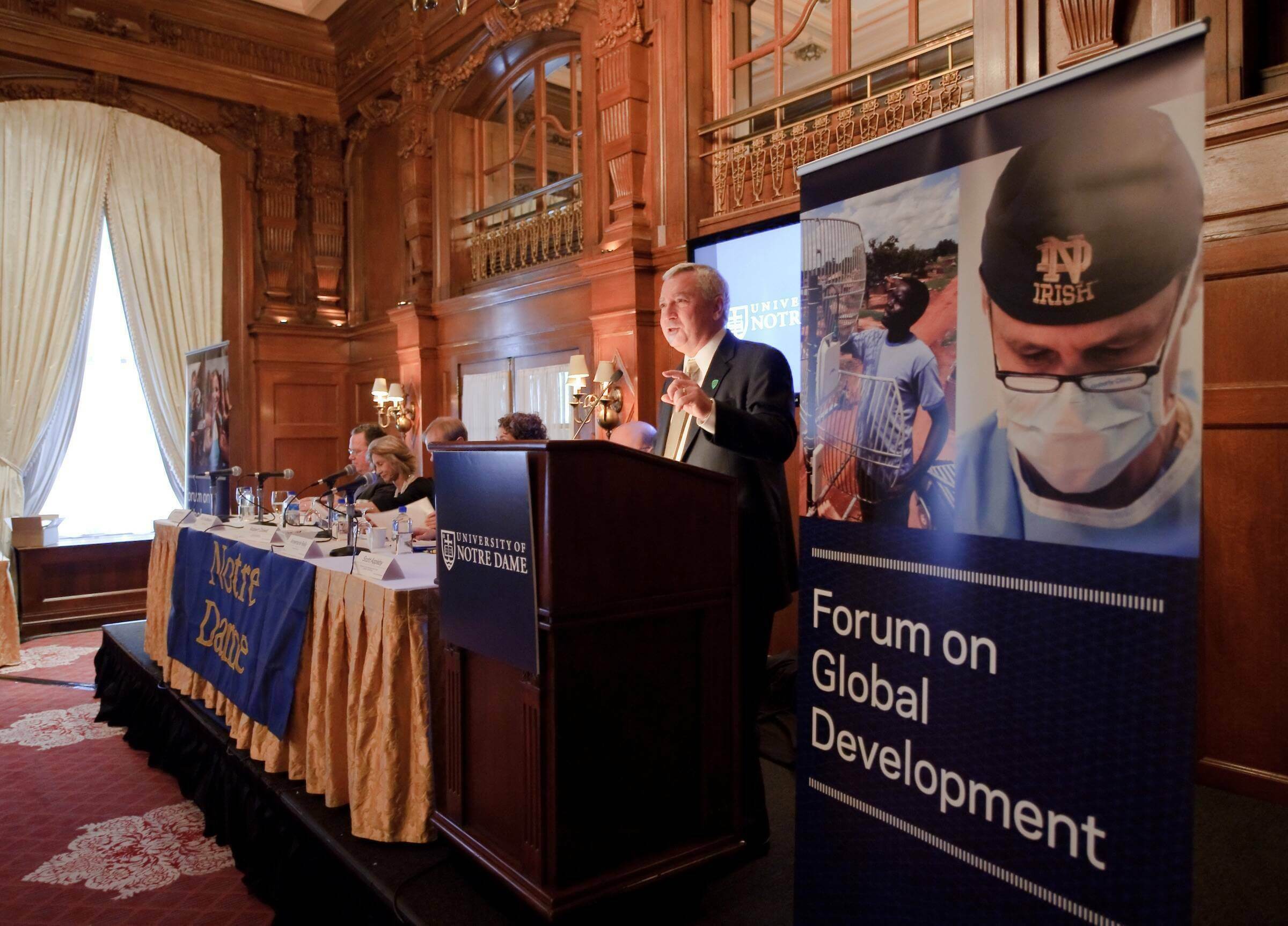
Bernhard mentions the Notre Dame Initiative for Global Development (NDIGD) as an example. Notre Dame faculty members had expertise in making evidence-based assessments of development strategies around the world. But Notre Dame is also a values-based organization with a vision of human flourishing that allows it to understand and work with a wide variety of partners—including faith-based organizations like Catholic Relief Services—to successfully implement solutions for reducing poverty and improving life in the developing world.
NDIGD started small in 2012, initially supporting its operations piecemeal with a series of small grants. But by 2015, it was a part of nearly half of all of Notre Dame’s grants and contracts related to international development. In 2017, it became one of seven centers and institutes to join Notre Dame’s new Keough School of Global Affairs and gained a permanent home in the purpose-built Jenkins Nanovic Halls. In 2019, it received an endowment from the Pulte Family Charitable Foundation and was renamed the Pulte Institute for Global Development. Today, it is internationally recognized as a leader in addressing global inequality through policy, practice, and partnership.
The changes within Notre Dame’s research culture also aligned with a shift in the broader landscape of academic research. “When I was first hired as a faculty member in the 1980s,” says Bernhard, “higher education had a culture of independence. The key was to ‘grow your lab.’ You were supposed to be independent, to build your own program.” But Bernhard reflects that the culture of independence was being replaced by a culture of interdependence. There was a new emphasis on interdisciplinary programs, collaboration, and team research.
So his initial investments as vice president for research focused on shared facilities, places that would spread benefits across campus and could bring like-minded faculty together in cross-cutting collaborations. This also meant that these core facilities could own and maintain the world-class equipment and instrumentation operated by expert staff instead of lower-quality instruments held at many separate labs across campus.
Bernhard began to build a high-performing team within Notre Dame Research (NDR). On one of his initial drives on the road to Notre Dame from Purdue, he developed an acronym he has used ever since to describe NDR’s culture: REF. Bernhard asked staff to be REFies—responsive, effective, and friendly—to build a service-oriented culture.
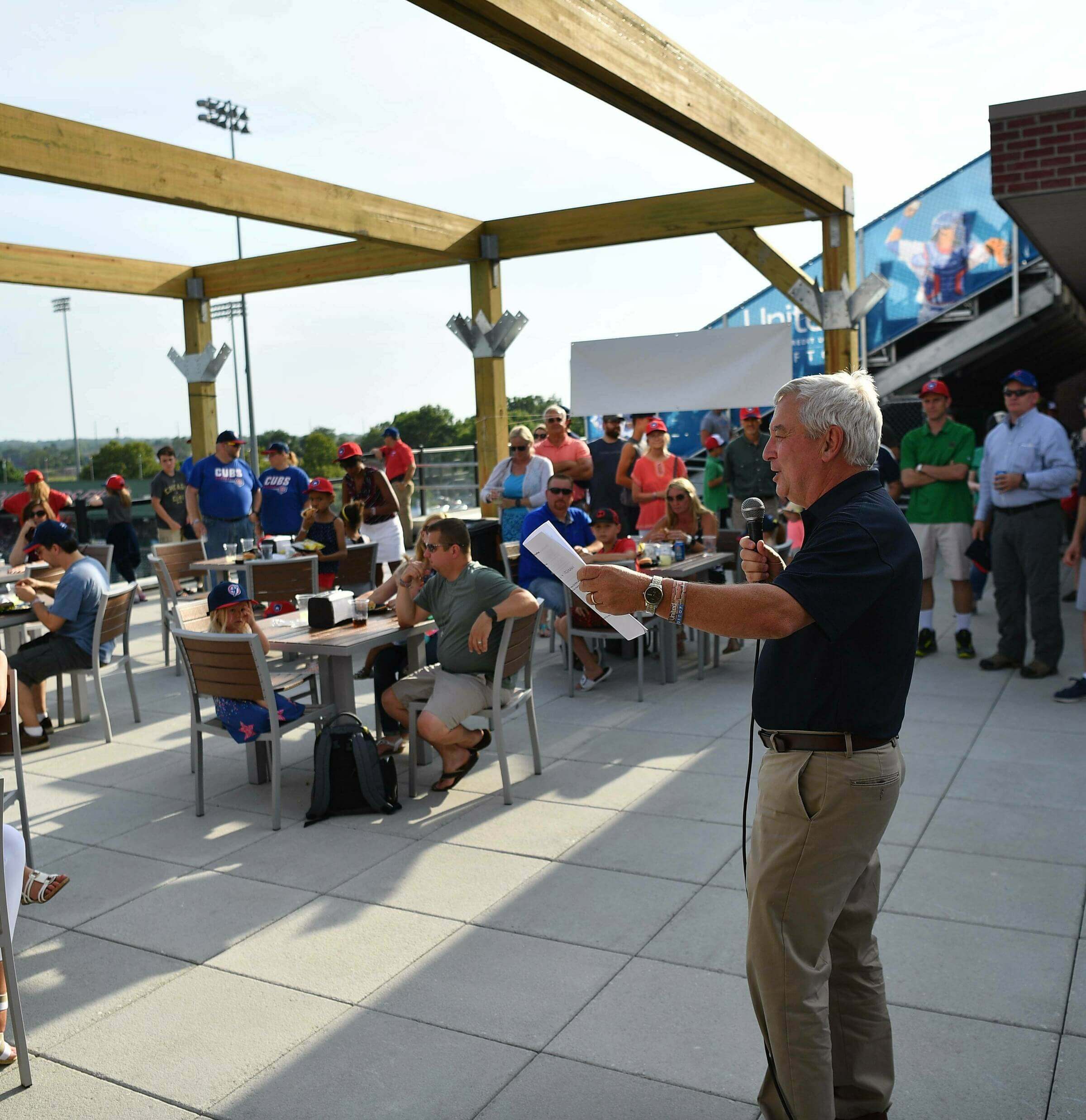
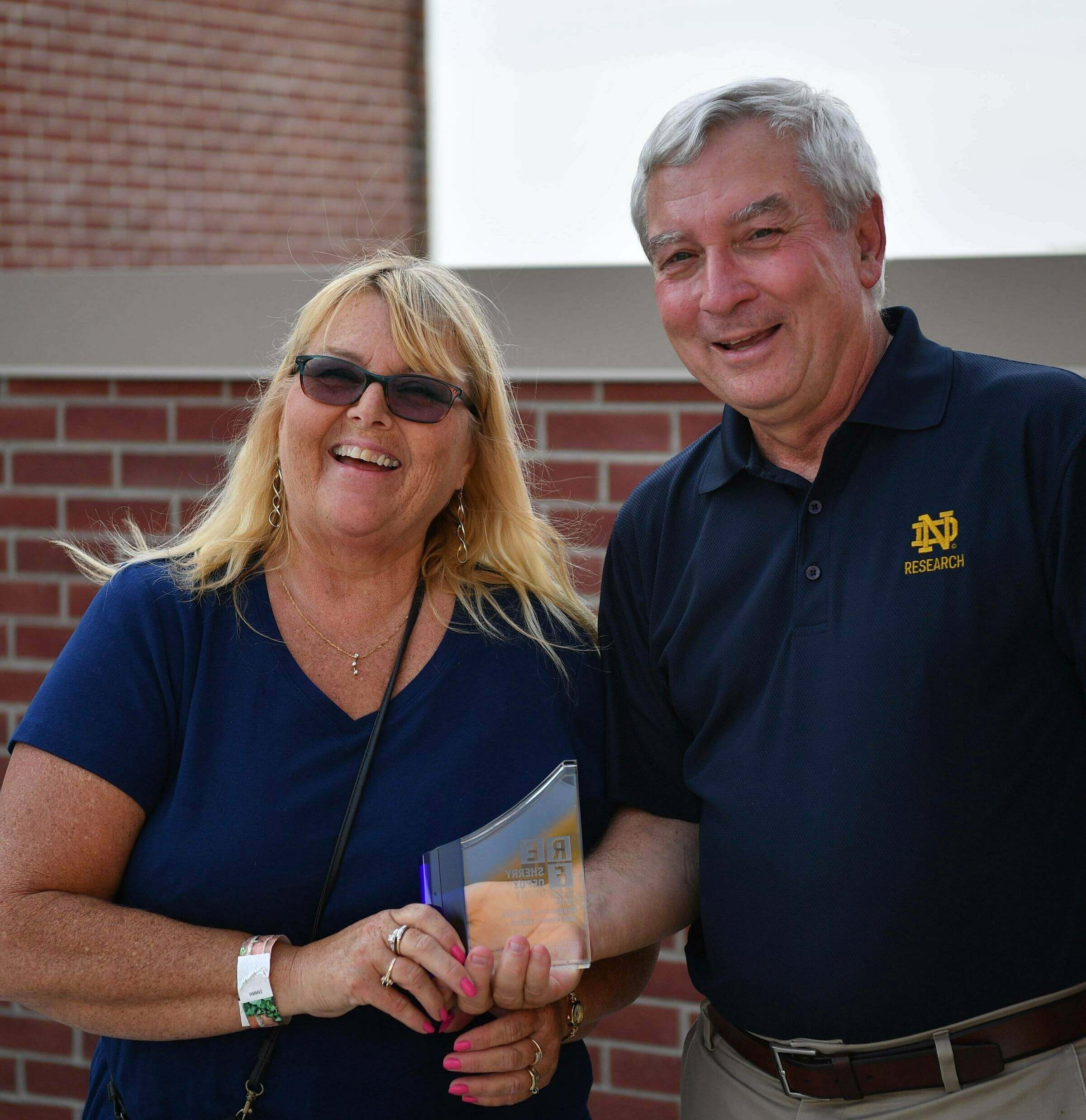
Within NDR, faculty and staff employees offer support throughout a research project’s life cycle, from developing an initial proposal for funding to communicating the results of a finished project. To support faculty as they conduct research, NDR oversees more than 30 core research facilities. With specializations ranging from field biology to nanotechnology, each core facility is a centralized resource where faculty can turn for help with microscopy, machining, computer-aided design, drug discovery, and even scientific glass-blowing.
The movement toward more interdisciplinary research also allowed Notre Dame to build on its strengths in a wide range of disciplines.
“As a Catholic institution, we seek truth in all areas—applied or basic research—and in every discipline, and that includes not just engineering and science but also the social sciences, arts, humanities, and professional programs,” Bernhard says.
One most ambitious interdisciplinary ideas to come out of the original Strategic Academic Programs Committee’s work is the Notre Dame Institute for Advanced Study (NDIAS). It convenes a group of scholars from many disciplines—the arts, engineering, the humanities, law, medicine, and the natural and social sciences—to collaborate around an annual theme. The year’s theme involves a question of public interest about leading a valuable, meaningful life. Fellows selected from across the University and from other institutions explore the question together in a residential environment through seminars, lectures, symposia, and conferences. Fellows have included prominent cultural and political figures such as politician Pete Buttigieg, fashion designer Thom Browne, poet and legal scholar Reginald Dwayne Betts, and CEO of AI for the People Mutale Nkonde.
Sustaining Success
A standard way to measure a University’s research awards activity is to look at the total amount of funding from foundations, government agencies, corporations, and other outside sources. In 2007, that number was $70 million. In fiscal year 2022, it reached a record high of $244 million, making Notre Dame one of the fastest-growing research institutions in the nation.
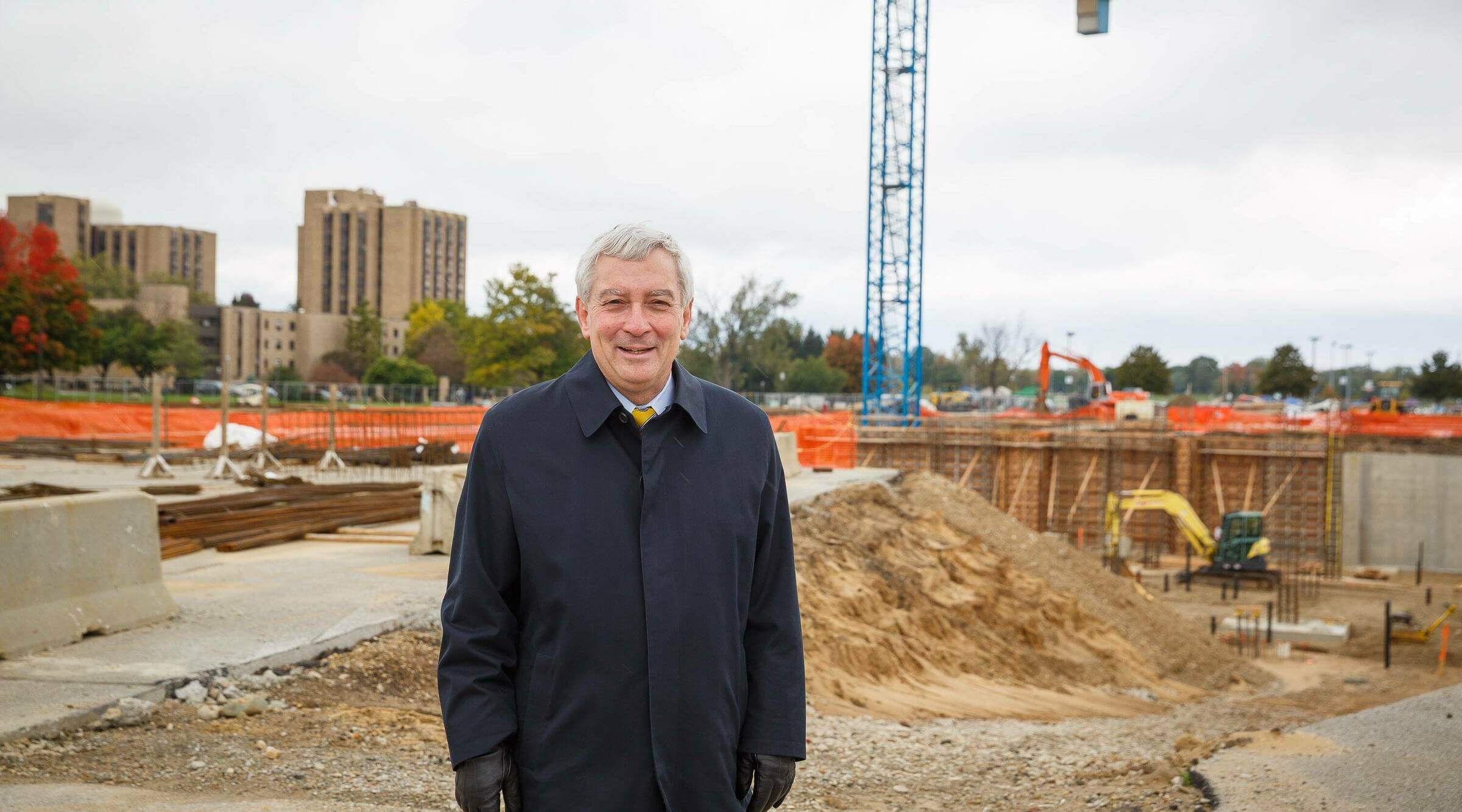
Over time, Bernhard came to recognize that not just to build success but sustain it, NDR’s culture would also need balance. In addition to being responsive, effective, and friendly, NDR needed to be a great place to work, one where staff were intrinsically motivated to succeed, where they felt they belonged and were comfortable raising concerns.
Bernhard also sought balance in supporting local concerns even as the University’s global reach expanded. He encouraged a new level of international research, not just through the Pulte Institute but also through the Eck Institute for Global Health, through grants for faculty to conduct research at the University’s Global Gateways operated by Notre Dame International, and through a host of other global research projects. At the same time, Notre Dame became more deeply engaged in regional concerns, eventually receiving both a $42 million grant for supporting economic development in the South Bend Elkhart region and a $35 million grant to establish a regional health hub at Notre Dame from the Lilly Endowment, Inc. Partnerships with the City of South Bend deepened as well, with Notre Dame contributing technology for local energy and wastewater management. The University also invested in research facilities in the city, including the Notre Dame Turbomachinery Laboratory (NDTL), a 25,000-square-foot facility in downtown South Bend’s Ignition Park, and Innovation Park, an 80,000-square foot entrepreneurship center that serves as a hub and launchpad for local startup companies.
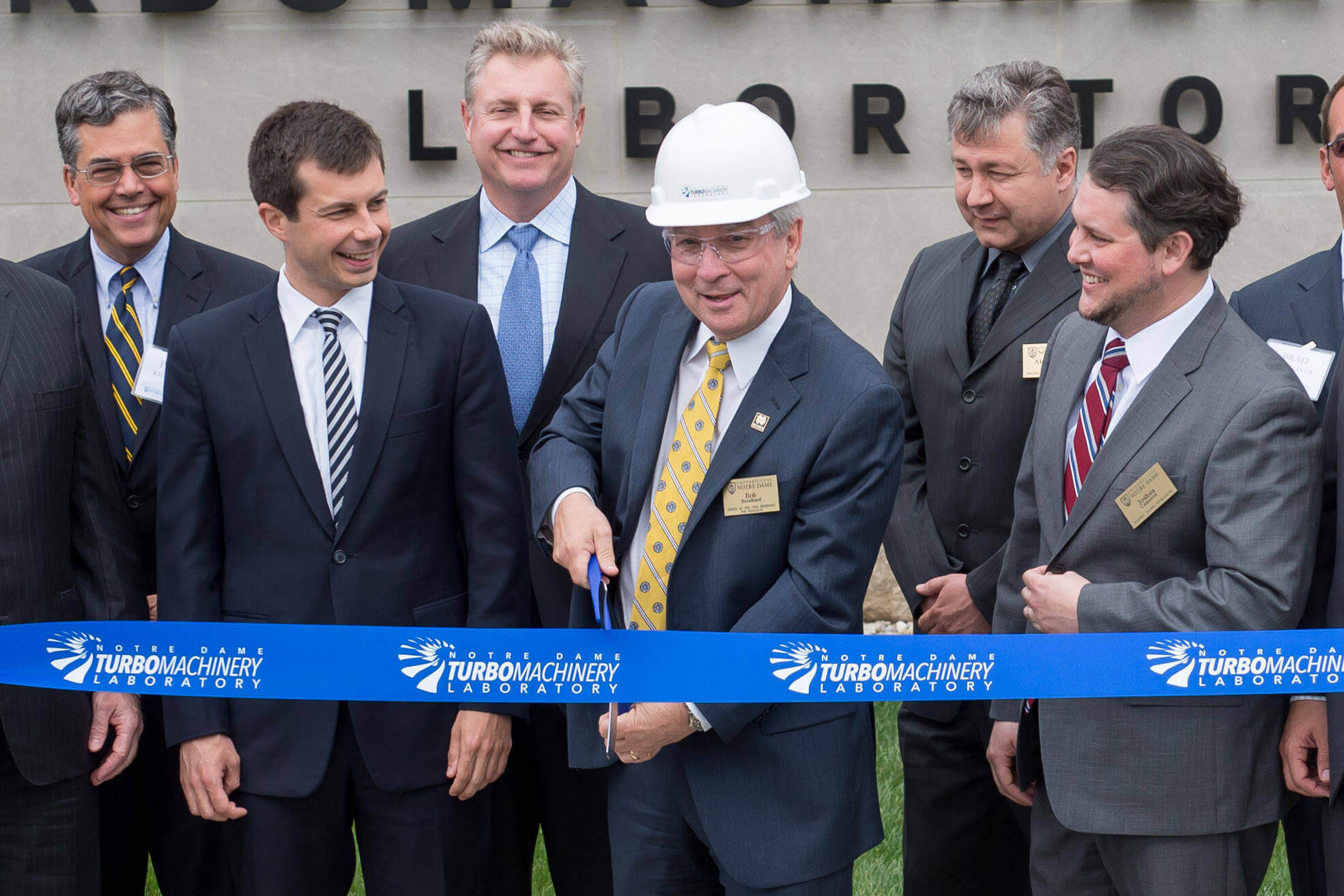
Bernhard says his job as vice president for research at Notre Dame has also been about maintaining a balance between playing both “offense and defense” on our Catholic identity. The “offense” is about identifying unique opportunities and possibilities for a Catholic research university related to studying and addressing the full range of questions that concern human beings. The “defense” is about correcting misconceptions about a Catholic research university by demonstrating that “being in a Catholic university isn’t limiting. The University can be involved with today’s most pressing issues. In fact, the issues of greatest concern today are where our voice is most needed.”
Another misunderstanding he has played “defense” against is the view that focusing on research will lessen faculty members’ commitment to teaching undergraduates.
Bernhard mentions an internal study that revealed a correlation between a faculty member’s research activity and student evaluations of their teaching. “We find that the best teachers have a passion for doing research and for understanding new things, and discovering new things,” Bernhard says. “As one of my colleagues said, research is the ultimate learning experience. When you conduct research, you are learning something that no one else has ever learned. Our best researchers translate their excitement and passion to the classroom.”
Although research has always been a core part of graduate students’ learning experiences, an increasing number of undergraduates are active in labs and field research sites. Today, over a third of Notre Dame undergraduates work actively alongside faculty on research projects either on campus labs or at a field research site.
The Pandemic Pivot
By 2020, Bernhard had begun a third term as vice president for research, and all his efforts to build and sustain success had gained momentum. “By twelve years in,” he recalls, “we thought most of the big moments were behind us—that we were adjusting to business as usual.” But a shock was about to upset the balance he had built.
During the spring break of 2020, Bernhard and his wife, Deb, were visiting his elderly parents in Iowa. On the drive back, they received a call from his mother saying their visit had been just in time; the assisted living community where they lived was now closed due to the pandemic.
He soon received another call from Burish about Notre Dame’s response to the pandemic. In mere days, Notre Dame had moved classes online, requested students not return to campus from spring break, and asked all non-essential staff to work remotely. Bernhard had to quickly assemble a task force and shut down all the labs and other research facilities on campus. He appointed 200 essential personnel to come to campus to ensure vital facilities and specimens could be preserved through a shutdown. Eventually, the team assembled a new set of protocols for resuming research with the bare minimum of staff available when the University allowed partial reopening.
In the last days of May 2020, Fr. John Jenkins announced his decision to reopen the University in the fall, writing in the New York Times, “We have availed ourselves of the best medical advice and scientific information available and are assiduously planning a reopening that will make the campus community as safe as possible. We believe the good of educating students and continuing vital research is very much worth the remaining risk.”
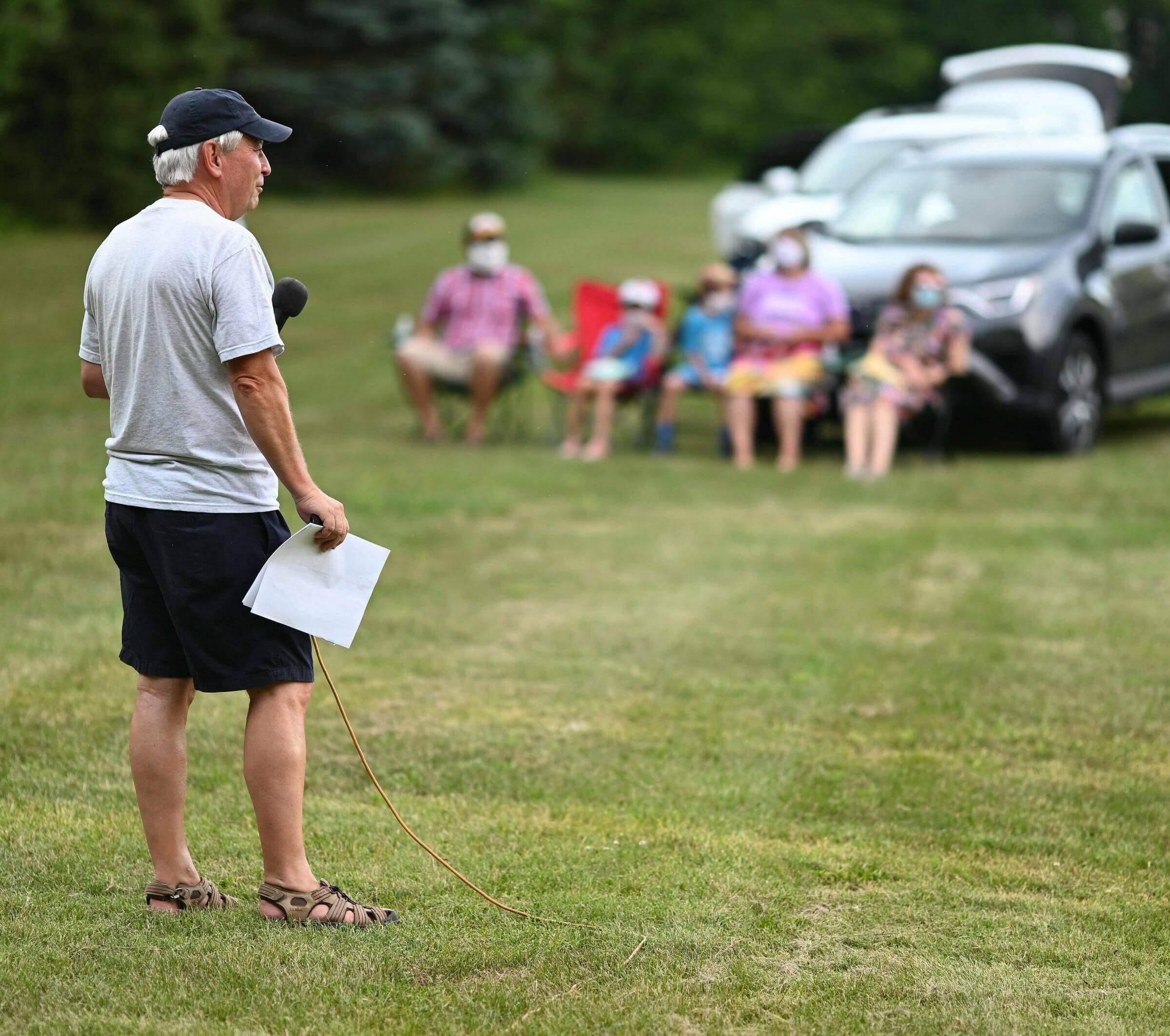
As the University formulated plans to reopen, it asked NDR’s Genomics and a Bioinformatics Core Facility (GBCF) to set up a facility capable of providing COVID-19 tests. Liz Rulli, associate vice president for research, led the efforts. Michael Pfrender, a professor in the Department of Biological Sciences and director of the GBCF, and Melissa Stephens, the assistant director of the GBCF, handled the technical details. With just two months’ notice, the team developed the capacity to test nearly the entire Notre Dame student body each week, along with essential personnel and individuals who thought they might have been exposed to the virus.
At the same time, labs kept running—first at 25% density levels, then at 50% as restrictions eased. Many labs had to alter processes and procedures, but all found ways to adapt and continue to conduct research.
“We didn’t realize it until the end of that school year,” says Bernhard, “but there was tremendous productivity. When we came to the end of the year, we found that faculty somehow had done more proposals and ultimately received more funding awards than they had in any other year that we had on record despite teaching hybrid classes, adapting their research to pandemic protocols, and dealing with all of their personal challenges. It was an amazing example of the resilience of Notre Dame faculty and students. It is noteworthy though that the impacts of the pandemic were not uniform. Many of our faculty and staff felt the effects very disproportionately and it has taken time for them to recover.”
Notwithstanding the tragedies and heartbreaks of the pandemic—Bernhard lost his own father to COVID-19—he remains proud of leading Notre Dame’s research programs through a dark chapter. “There were lots of challenging moments, but I am grateful I was prepared to step in and meet the challenges, to have the right answers to the questions that were being asked.”
Distinguished and Distinctive
Bernhard had initially planned to retire in the summer of 2022 at the end of his third term as vice president for research, but Fr. Jenkins asked him to stay on for one final year while Notre Dame searched for his replacement. Bernhard’s own personal “Game of the Century” was, as he put it, “going into overtime.”
He says his final year has given him more time to consider his tenure and the qualities that will carry Notre Dame’s research program into a new chapter. He has reflected more on a word that has guided him for the past 16 years: mission.
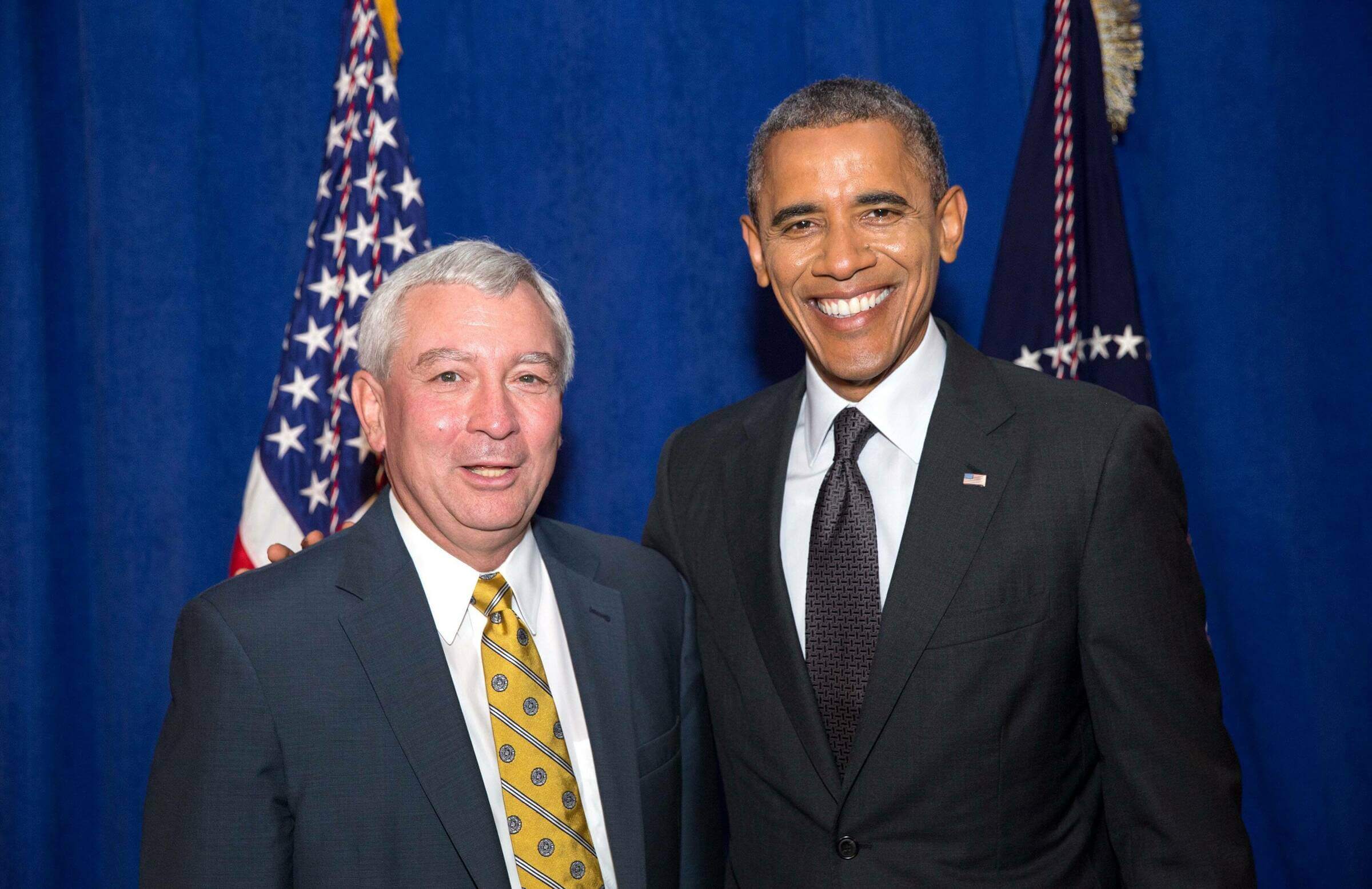
“During my third term, I started to focus on mission more directly,” Bernhard says. “It was always there, but I thought about ways to make it more pronounced. What I found through a long process of investigation and consultation is that our mission to be a powerful means for doing good in the world is the key to our strategy. Notre Dame is very distinctive. What became more clear to me is that we can build a distinguished reputation on the foundation of our distinctiveness.”
Bernhard says this message crystallized for him during a recent external review of Notre Dame’s research programs. One former president of a major research university who was taking part in the review told Bernhard, “Your mission is your great gift.” Bernhard recalls, “It was a ‘drop the mic’ moment. It told me our mission is what we need to build around and embrace, whether in science, math, philosophy, or any other discipline. At a Catholic university, we seek knowledge everywhere and are confident that faith and truth are consistent. That is where I think the greatest potential lies for Notre Dame.”
On the first of June, 2023, just as Bernhard’s tenure as vice president for research was entering its final month, the University received a significant recognition of its research trajectory. The Association of American Universities (AAU) announced that it had selected Notre Dame for membership. A consortium of leading North American research universities, the AAU includes 71 of the most prominent universities in the United States and Canada. It admits new members by invitation only and its admission criteria include qualitative and quantitative measures of the breadth and the quality of a university’s research, as well as its graduate and undergraduate programs.
For Father Jenkins, the election was a new milestone in the efforts begun at the beginning of his presidency. He said, “While Notre Dame has long been known for its undergraduate education, we have striven to be a preeminent research institution with superb graduate education, all informed by our Catholic mission. We are honored to be invited to join the AAU and heartened by the AAU Board’s recognition of our progress as a research university, and we look forward to participating in this august organization.”
Bernhard remarked, “From the beginning of my tenure, largely at the urging of Tom Burish, we have measured our programs against those of the AAU universities. This approach seemed audacious in the beginning. But as time passed, we continued to make progress, on both quantitative and qualitative metrics. The election to the AAU has been a validation of both the strategy and the effort.” He also added that the election was not just a recognition but also a new call to serve and shape higher education. “Notre Dame will add a distinctive and complementary voice within the AAU,” he said, “and I am confident that the AAU will be increasingly pleased to have Notre Dame as a member. Notre Dame delivers.”
For all of the growth in Notre Dame’s research enterprise, Bernhard insists that full maturity still lies ahead. “Today, you could say we’re at an adolescent stage. We are still in a phase of unevenness, some young aspects and some mature aspects.” Bernhard finds the most confidence for the future when he considers the research culture that has grown at Notre Dame over the last 16 years.
When Bernhard looks back, he mainly expresses his gratitude for all of the people who have taken Notre Dame’s mission to heart. “It has been a privilege to work with people who are authentic, honest, and hardworking—and who are excited about the mission of the University,” he says.
His personal highlights range from big to small. He mentions trips—especially those with Notre Dame’s Advisory Council on Graduate Studies and Research to East Africa, the Vatican, and CERN’s Large Hadron Collider in Switzerland—and he also mentions the onboarding lunches he has had with many of Notre Dame Research’s 260 staff members.
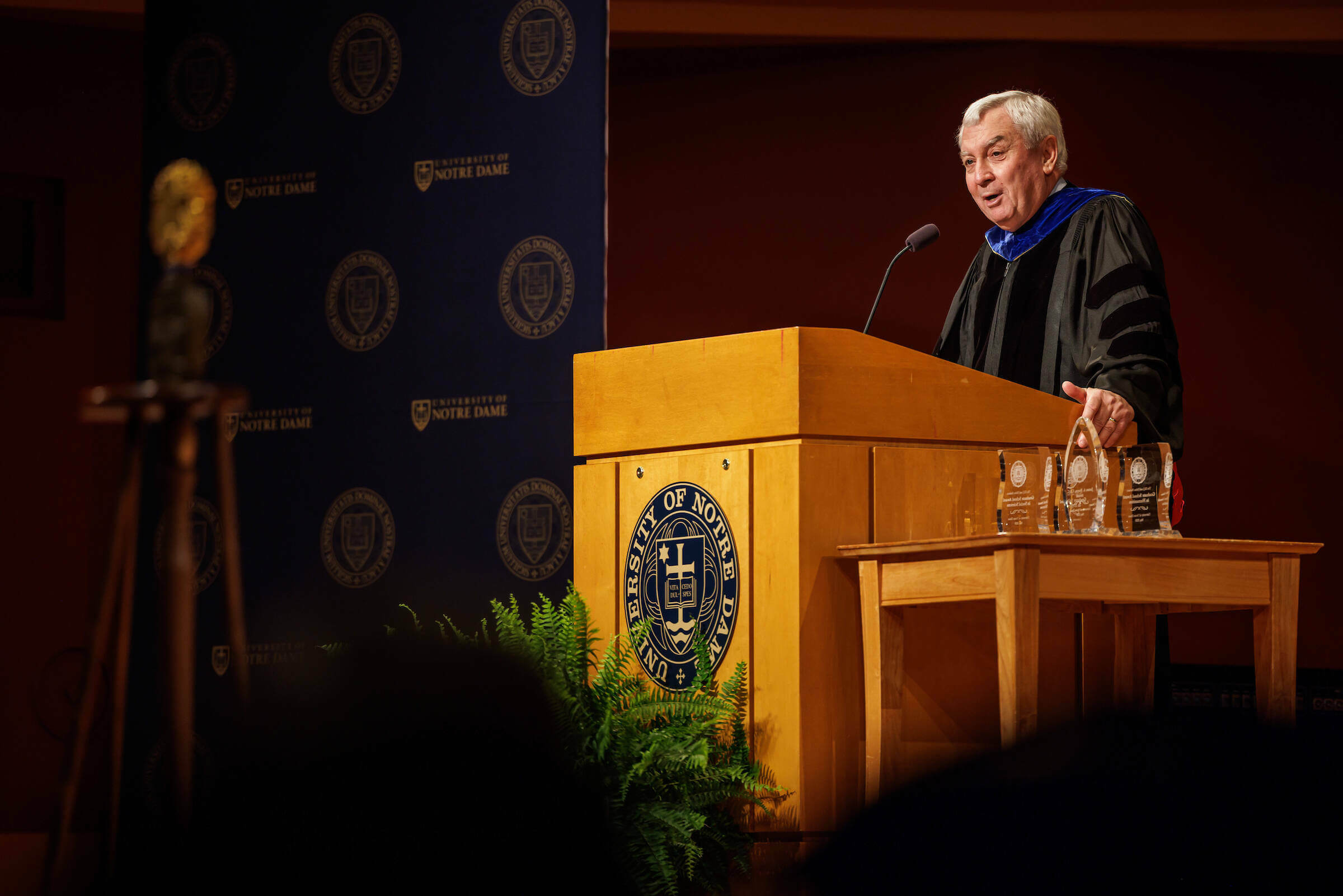
And, of course, he mentions meeting up again with Sister Eugene. After making a few calls, Bernhard got in touch with her at her retirement home in Dubuque, Iowa, to let her know, “After 40 years, I finally made it to Notre Dame.” When Sister Eugene visited campus the following year, the two were able to attend a Notre Dame football game and sat together to cheer on the Irish.
Originally published by Brett Beasley at research.nd.edu on June 07, 2023.
